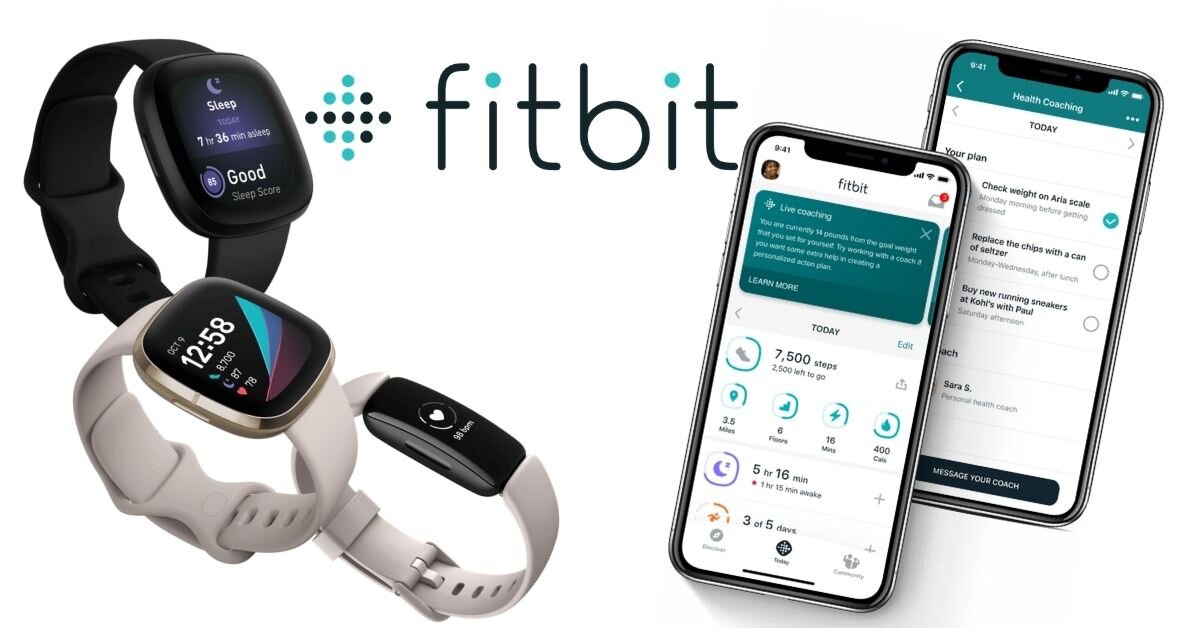Control Your Diabetes with an Easy-to-Use Step Counter from Fitbit, Garmin or Apple
/Do you find it difficult to manage your blood sugar levels? Are you fluctuating a lot between the 5-12 range, or you’ve just given up checking regularly?
Managing your blood sugar levels can be hard when you’re living with diabetes. Sometimes, it seems like no matter how hard you try, your glucose levels are never where they should be.
If you’ve been living with diabetes for a while now, you know that too much glucose in the bloodstream can cause damage to your heart, kidney, and blood vessels. You also may have heard that diabetes can affect your eyes, increasing the risk of blindness. While people with diabetes have a higher risk of blindness than those without the condition, proper treatment and lifestyle changes can prevent or delay serious complications.
Regular exercise improves glycemic control, which is a determining factor in how likely you are to develop diabetes-related eye damage. Adding even modest physical activity to your daily routine is proven to have a significant impact on your overall health, lowering blood glucose levels and boosting your body’s sensitivity to insulin.
But developing a consistent routine isn’t always easy.
HOW FITNESS TRACKERS CAN HELP
Clinical studies have shown that wearing a step counter like the ones offered by FitBit, Apple, and Garmin helps you incorporate more physical activity into your routine, lower your blood pressure, and reduce your body mass index (BMI). What’s more, these devices also provide you with the motivation, consistency, and accountability you need to build a lasting routine.
Fitness trackers are most commonly worn on the wrist or waist and count the number of steps you take each day. They also continuously monitor other aspects of your health, such as heart rate, breathing rate, and temperature, displaying your health data in real-time.
With a fitness tracker, you can see improvements in these areas:
Exercise: Walking is a powerful tool that can lower your blood glucose levels and give you more control over your diabetes. Fitness devices help you stay on track while also counting the number of calories you burn during your walk. As the number of calories burned goes up, your blood sugar levels should go down.
screen shot of garmin app showing 7-day sleep tracker function
Sleep: Many of today’s fitness trackers can track your sleep thanks to sensitive motion detectors that monitor your movements. For people with diabetes, this data can help you know more about your sleep duration and quality while alerting you to signs of a potential issue. For example, waking up a lot at night can be a sign that your blood sugar is getting too low. While not sleeping enough can cause blood sugar imbalances.
Nutrition: Fitness trackers come with more than just the wearable device. Many include access to websites or apps where you can record your food intake, create meal plans, and easily calculate nutrients. Your nutrition information is automatically adjusted to account for calories burned, and you can even sync some devices with diabetes-specific tracking apps that monitor carbs and insulin doses, so everything is visible in one place.
Connection: Fitbit, a popular fitness tracker, allows you to connect your account with friends and family to share your activity levels and daily step counts. This lets your keep in touch with your loved ones and creates challenges to see who can reach the highest number of daily steps.
BEST STEP COUNTERS FOR PEOPLE WITH DIABETES
We’re partial to FitBit’s range of fitness trackers as their accompanying app allows you to track your glucose levels and monitor them alongside your daily activity levels and other health data points. This helps you see how your glucose levels are impacted by your daily food intake, exercise, sleep, and more. Once you start recognizing patterns, you’ll gain more control over your glucose levels.
Images via fitbit.com
If you’re using the OneTouch Reveal app to monitor your glucose levels, the Fitbit app will automatically import your readings from that app. You also have the option to manually enter your glucose levels if you’re using something else.
To learn more about how the Fitbit app makes life easier for people with diabetes, read their blog post here.
HOW DO I GET STARTED?
Even small, achievable increases in physical activity can have a big impact on the overall health of people with diabetes.
If you’re just beginning your fitness journey, start slow with a 20-30 minute walk around with your neighbourhood or the local gym a couple of times a week. Set goals for yourself and work your way up, celebrating your wins along the way. Remember, a 10-minute walk is better than a 0-minute walk.
To get your baseline, just wear your step counter for 7-days and see what your current base activity level is at. Don’t change anything in your life. Then each week, try to add 5% more to your daily level. So, if you’re currently at about 3,000 steps a day right now, try to increase that to 3,150 next week. Remember, if you change things to quickly you risk injury and can set yourself up for failure mentally.
As always, check-in with your healthcare team before starting an exercise program. If you are already experiencing eye problems, remember to mention this to your doctor so you can develop an exercise routine together that won’t put additional strain on the blood vessels in your eyes (like lifting weights).
HERE ARE SOME SIMPLE IDEAS TO INCREASE YOUR DAILY STEPS
Park your car further away from your destination to sneak in steps
Grab a coffee from your local coffee shop with a friend and walk while catching up instead of sitting
Read while walking on the treadmill
Use stairs instead of elevators when possible
Take a walk around the neighbourhood after meals
Take your pet to a local trail and spend the afternoon exploring
Try a new hiking path
CONCLUSION
We hope these resources will make it easier to incorporate more physical activity into your routine and better control your blood sugar levels.
Counting your steps every day using a Fitbit, Apple Watch or Garmin Watch can help to keep you motivated and accountable to yourself. If you can’t afford one right away, you can always record down how long you just spent walking. Movement is one of the best medications that we can prescribe and it’s free.
Maintaining a healthy active lifestyle is just as important as regular checkups and medication to maintain your overall health.
But don’t forget to book those yearly eye examinations. If you notice any change in your eyesight, seek medical attention immediately. Our optometry clinic is always open and available to same-day emergency visits.
To see one of our optometrists to talk about your diabetes and eye health, book an appointment here.


















